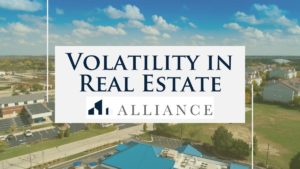Why MOB Conversions are Rare
A few months ago I wrote about real estate conversions. That piece prompted several questions from investors that I wanted to address:
First, some quick background: when a shortage of a certain kind of property type (e.g. MOB or housing) meets an oversupply in a different property type (e.g. office), why not simply convert properties from one to the other?
This makes a lot of sense, in theory. Investors get higher occupancy rates, governments expand their tax base, residents have more options and lower housing costs. It seems like a win-win-win.
In practice, conversions are rare. Alliance’s experience with investing in major property improvements makes it clear that the reason is cost.
Residential buildings have different needs from commercial properties. They often need more windows, fire alarms, circuit breakers, and reconfigured HVAC and plumbing, for example. We’ve worked on these sorts of changes, as needed, on our commercial properties, and they add up to major projects.
Electrical, HVAC, and plumbing work, in particular, can be very expensive. They require engineering and skilled professionals to execute. Plumbing changes can also require core drilling the floors, which is another major expense.
Subscribe to our commercial real estate newsletter.
Depending on local regulations, all these changes to a building can also have their own permitting processes, which cost money and time.
The time element is key. Money now is worth more than money later, and all these steps (engineering, permitting, and getting the work done) all require significant time. The costs hit project economics up front, but income from a conversion always comes later. Sometimes, much later.
This is a major drag on the economics. Investors who want good returns need to always watch the bottom line, and a conversion project is just rarely worth the cost.
What this means for Alliance is that the current high demand for medical office buildings is unlikely to be met by converting other property types. It simply takes too much time and expense for conversions to impact the market in a big way.
Supply will continue to be dictated more by new construction than conversion. Construction has been slow, constrained by a variety of factors, including high costs.
So, I foresee continued strong demand in the medical office building sector… and tight supply. Alliance has been ahead of this trend for years, and I expect to continue producing great returns for our investors.
POSTED BY
Ben Reinberg
Founder & CEO | Alliance Group Companies

Ben Reinberg is Alliance Group Companies' founder and CEO.
Since 1995, Alliance Consolidated Group has acquired and invested in medical properties with net leases between $3 and $25 million across the United States. With decades of commercial real estate experience, we take pride in committing to meeting the goals of our Sellers, as we consistently and seamlessly adhere to successful closings.



